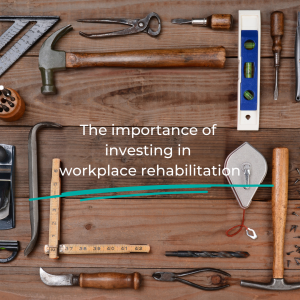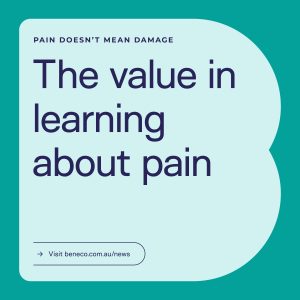Feb 18, 2022
Uncategorized
Promoting the benefits of investment in Workplace Rehabilitation

As a proud member of ARPA (Australian Rehabilitation Providers Association) Beneco and ARPA consistently advocate for the benefits of workplace rehabilitation providers versus other alternatives in its representation of the sector.
Research has demonstrated that workplace-based interventions are effective in improving a broad range of return-to-work outcomes.
Rehabilitation Providers demonstrated several different characteristics which include independence and impartiality, as well as skills and qualifications that have been demonstrated to be effective in improving rehabilitation and return to work outcomes.
The NSW State Insurance Regulatory Authority (SIRA) recently commissioned Ernst & Young (EY) to undertake a comprehensive research study to investigate the impact of receiving WRP services on return-to-work rates for claimants on weekly benefit. The high-level results show that:
- for claims between 6 months and 24 months’ time lost, the appointment of a WRP improves the return-to-work outcome
- the timely appointment of WRP (within the first 8 weeks) can improve return to work by 3% to 5%
- appointing a WRP early in the claims process can result in total claims costs savings of between 4% and 9%.
Claims costs for NSW are approximately $3.7 billion per year. This research shows that if the appointment of a rehabilitation provider occurs early in the claims process this could lead to a $330 million saving for the scheme. If applied across all Australian workers’ compensation schemes, increased use of workplace rehabilitation earlier in a claim, could equate to an $800 million saving for Australian employers and insurers.
There are many studies that have provided insight into the value of workplace rehabilitation services:
- the return on investment for every $1 invested in early intervention is $75
- international evidence has shown that expenditure on work reintegration and rehabilitation provides a return on investment for employers of 3.7
- Swisse RE found that for every $1 spent on rehabilitation services on life insurance claims, insurers saved between $24–$39 on income protection claims costs
- the Occupational Rehabilitation Financial Benefits Report conducted by Actuarial Edge for ARPA in January 2019 found a return of between $28–$32 for every $1 invested
- PWC in 2014 produced a Return-on-Investment Analysis: Creating a Mentally Healthy Workplace which identified the positive financial benefits of good workplace rehabilitation.
In 2018, research funded by WorkSafe Victoria and undertaken by the Institute for Safety, Compensation and Recovery Research (ISCRR) found moderate to strong evidence that:
- workplace / occupational rehabilitation interventions are effective at improving return to work outcomes, particularly for musculoskeletal injuries
- workplace / occupational rehabilitation achieves the best outcomes when delivered early (2–4 weeks of injury).
A copy of the complete position paper by ARPA can be accessed here.

Other articles you might be interested in

Jun 27, 2023
The Value Of Learning About Pain
Pain education is a popular approach for persistent pain. This involves learning and provision of education on a variety of pain concepts that are thought to be important to a persons recovery.
Read more
Jan 23, 2023
My Doctor told me to rest...
If you are injured or in the early stages of recovery, do you think it is better to rest or to move? The common belief that if you are injured you are best off resting and staying still so you don’t do any further damage. However, there is lots of scientific research to suggest otherwise.
Read more
Mar 31, 2022
Is surgery doing more harm than good?
The big unknown is that many common orthopaedic surgeries are not better for reducing pain that non-surgical options. There are alternatives that are cheaper, and safer – such as exercise programs. A recent article looked at 3 of the most common orthopaedic surgeries that may be doing more harm than good and costing people more than just their money.
Read more